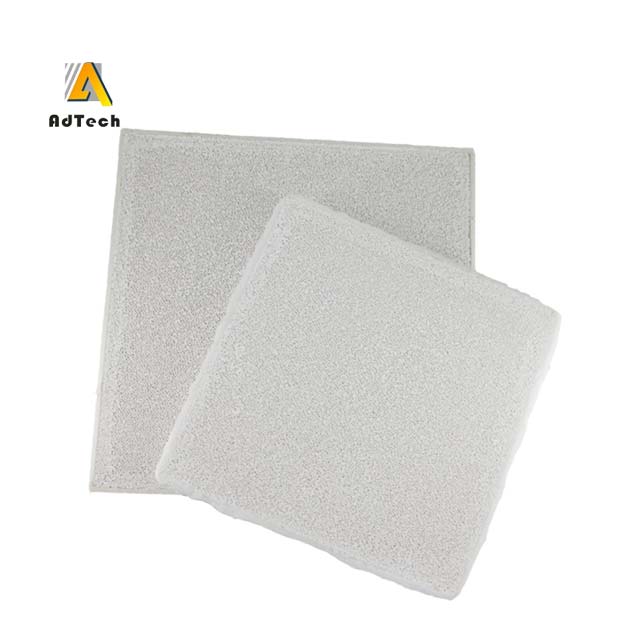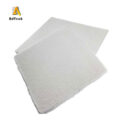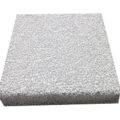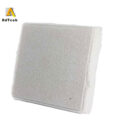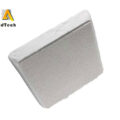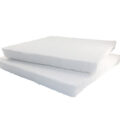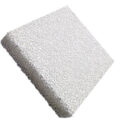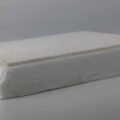The molten Al ceramic filter can effectively remove various inclusions in the aluminum melt with micron fineness, so that the molten aluminum becomes a smooth laminar flow, which is beneficial to stamping. These impurities usually cause bubbles and inclusions in the slab, which seriously affect the purity of the molten metal, thereby further affecting the processing performance, mechanical properties, corrosion resistance and product appearance quality.
Nowadays, there are many ways to remove these harmful substances and purify the aluminum melt. According to different methods, these methods can be divided into two categories: furnace treatment and continuous treatment outside the furnace (ie online treatment). According to the role, it can be divided into two types: mainly degassing or deslagging.
Here is a method of continuously filtering molten Al using foam ceramic filter plates.
The ceramic follicle has a certain strength network structure, which can withstand the influence of the pressure difference on the surface of the metal liquid and the metal flow, but it is brittle and brittle. Due to the precise structure, uniform mass and large surface area of this material, the filtering effect is excellent.

30ppi 40ppi molten Al cast ceramic filters usually use polyurethane foam as a carrier, dipped into a ceramic slurry made of fine powder (such as refractory aggregate sintering aids, binders and water), and then squeeze out the excess slurry. The ceramic material around the foam fiber is dried at high temperature, fired and sintered, and finally the foam ceramic product is left.
Because the casting temperature of the casting alloy is different, the foam ceramic filter of refractory material should be selected for casting. In order to solve this problem, a simple filter made of metal wire mesh, perforated steel plate, etc. is inserted into the gating system to remove impurities from the beginning. To internal filters with two-dimensional structures, such as silicate needle fibers and boron nitride fibers. Nowadays, ceramic foam filters use pore sizes to mechanically intercept large particles of mixed oxide, and filter cakes to filter small particles of mixed oxide. It also has adsorption and filtration functions. After the use of ceramic foam filters, the output of aluminum castings has been greatly improved.

